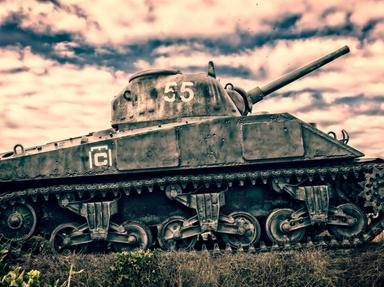Quiz Answer Key and Fun Facts
1. The panzer divisions, with their armor, firepower, and mobility, were crucial to the rapid elimination of any Allied lodgement along the Normandy coast. How many panzer and panzergrenadier divisions did German forces have in the OB West area, which included France, Belgium and Netherlands, on 1 June 1944?
2. From June 1941, when the German army invaded the Soviet Union, to June 1944, before the Allied-Day landings, the territory of France and Western Europe served primarily as an area where heavily damaged German divisions in the East could be refitted and rested. How many badly damaged panzer divisions were withdrawn from the Eastern Front to the West for refitting, before the Allied invasion of Normandy?
3. In November 1943, Adolf Hitler signed Fuhrer Directive No. 51, which gave a priority for the improvements of the German defenses in Western Europe against the anticipated Allied invasion. This directive no longer allowed the withdrawal of any divisions from France to the Eastern Front, which was a common practice up until then. Did Germans actually transfer any panzer divisions from France to the East from November 1943 until the Allied invasion?
4. Which one of these panzer divisions was never in France during the Battle of Normandy?
5. How many panzer divisions were fully operational at the time of the Allied D-Day landings on 6 June 1944?
6. What factor hindered the speedy improvement (to operational status) of the state of panzer divisions in the West that were not fully operational?
7. Which panzer division was the best equipped and most powerful at the time of Allied D-Day landings on 6 June 1944?
8. Most of the panzer divisions were committed immediately to Normandy after the Allied D-Day landings?
9. Which German tank was the most widespread during the Battle of Normandy?
10. It's often said that after the Battle of Normandy, especially the Falaise Pocket, panzer divisions were destroyed. How true is this statement?
Source: Author
Uspech3da
This quiz was reviewed by FunTrivia editor
gtho4 before going online.
Any errors found in FunTrivia content are routinely corrected through our feedback system.
